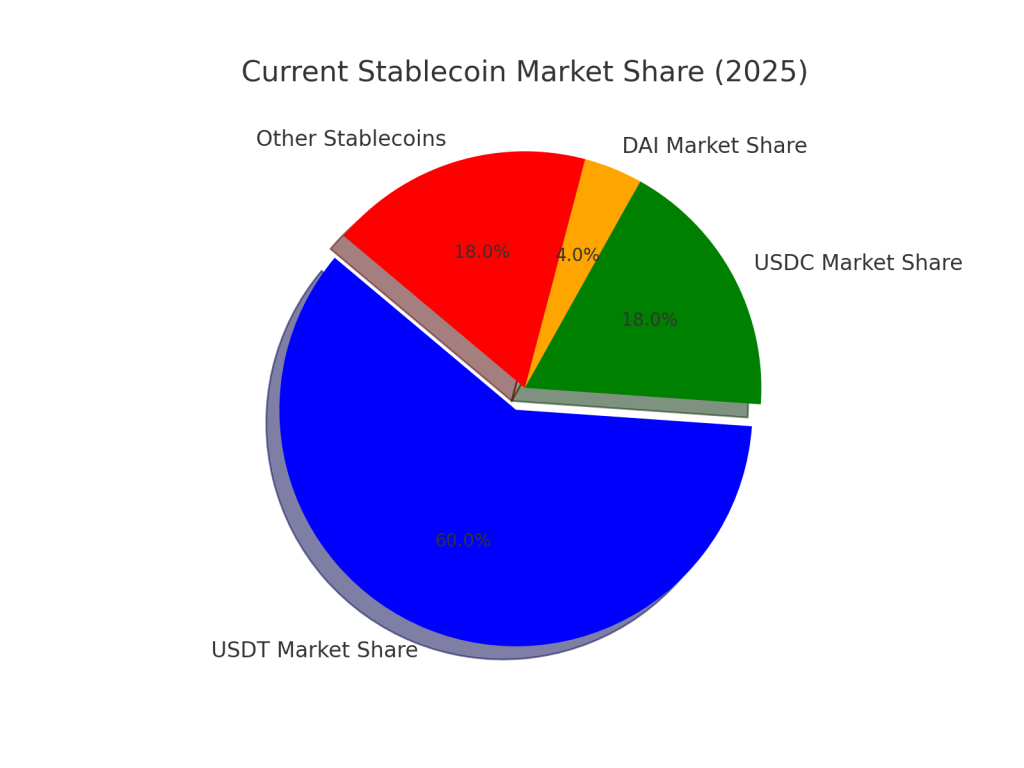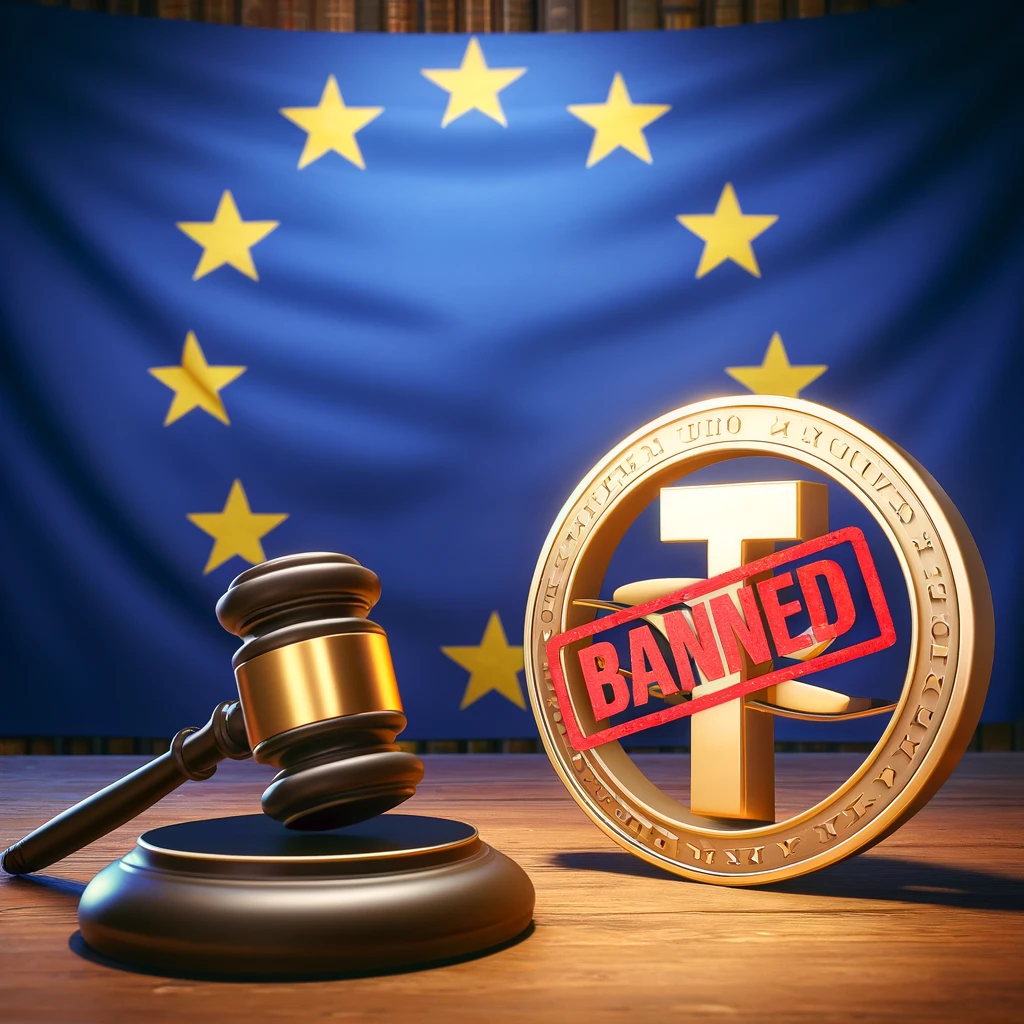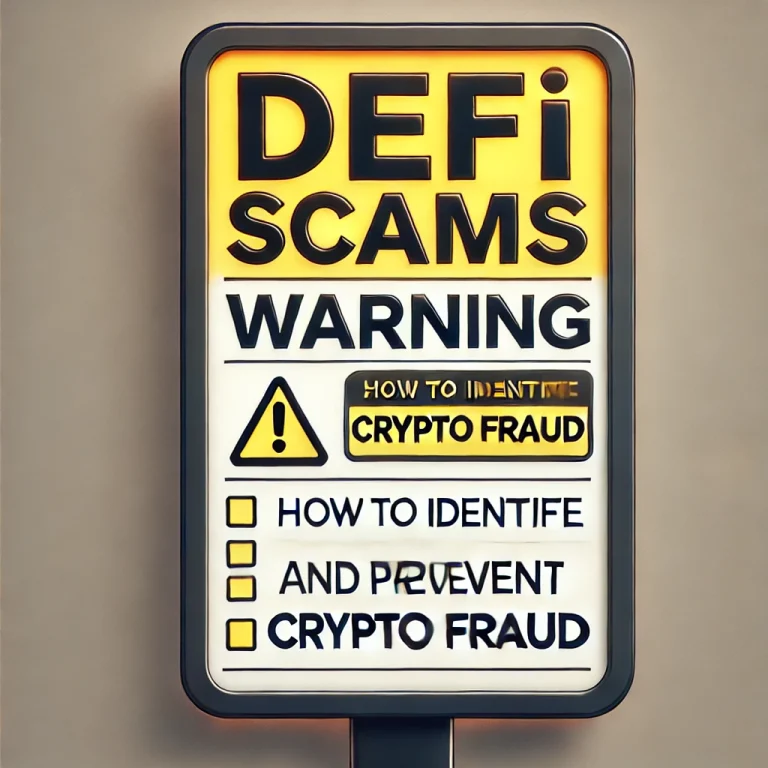📌 Why Is the EU Cracking Down on USDT?
USDT (Tether) is the most widely used stablecoin in the crypto industry, facilitating billions in daily transactions. However, with the European Union tightening crypto regulations, USDT could face restrictions or even be delisted from certain platforms.
🔍 Key Questions:
- Why is the EU targeting USDT?
- How will this affect crypto trading, DeFi, and liquidity?
- What alternatives do investors have?
1️⃣ Why Is USDT Crucial for the Crypto Market?
💡 USDT’s Market Dominance
- The most used stablecoin: USDT accounts for over 60% of the stablecoin market.
- Supported by most exchanges: Binance, OKX, and Bybit all rely heavily on USDT trading pairs.
- Essential for DeFi: Many DeFi protocols use USDT as a primary collateral asset.
📊 Market Data (As of March 2025):
Metric | USDT | USDC | DAI |
Market Cap | ~$95B | ~$28B | ~$6B |
Market Share | ~60% | ~18% | ~4% |
Key Use Cases | Trading, Payments, DeFi | Trading, Savings | DeFi, Decentralized Apps |
USDT’s sheer market dominance means that any regulatory action could significantly disrupt the industry.

2️⃣ Why Might the EU Ban USDT?
🔎 Regulatory Concerns:
- MiCA (Markets in Crypto-Assets) Compliance
- The EU’s MiCA law, set to take effect in 2025, requires stablecoin issuers to hold 1:1 fiat reserves.
- Tether’s transparency has long been questioned, raising concerns about its compliance.
- Competition with Euro-Backed Stablecoins
- The EU might favor Euro-pegged stablecoins (e.g., EUROC, SEUR) to reduce dependence on USD-backed assets.
- AML & Financial Crime Risks
- USDT has been linked to illicit transactions, prompting concerns about money laundering and fraud.
3️⃣ Potential Market Impact
💥 1. Reduced Liquidity in Crypto Exchanges
If USDT gets delisted from EU exchanges, liquidity could drop, leading to higher volatility. Smaller exchanges could be hit the hardest.
💰 2. Shift Towards Other Stablecoins
USDC and EUROC could gain market share, particularly in regulated platforms like Coinbase.
📉 3. Short-Term Market Volatility
A sudden restriction on USDT could trigger panic selling, briefly causing price instability. However, in the long term, other stablecoins may stabilize the market.
📊 Projected Market Effects:
Impact | Expected Outcome |
Crypto Exchanges | Lower liquidity, potential trading disruptions |
Alternative Stablecoins | USDC & EUROC gain traction |
DeFi Protocols | May need to shift from USDT-based collateral |
Market Sentiment | Short-term volatility, long-term stabilization |
4️⃣ What Should Investors Do?
✅ Diversify Stablecoin Holdings
- Consider holding USDC, EUROC, or decentralized stablecoins (DAI, FRAX).
✅ Monitor Regulatory Developments
- Stay updated on whether major exchanges will continue supporting USDT in the EU.
✅ Explore DeFi Alternatives
- Even if centralized exchanges restrict USDT, DeFi platforms may still support it.
5️⃣ Conclusion: What’s Next for USDT?
🔮 Short-Term:
- Market uncertainty may cause temporary volatility.
- Investors may shift funds into more regulated stablecoins.
🌍 Long-Term:
- If Tether complies with MiCA, USDT could remain available in some EU markets.
- If not, USDC and Euro-backed stablecoins may dominate.
📌 Key Market Trends to Watch:
✔️ Stronger regulation favoring fully backed stablecoins
✔️ Growth of Euro-pegged alternatives (EUROC, SEUR)
✔️ Potential for Tether to enhance transparency
📌 FAQ: Key Questions Answered
❓ Will the EU completely ban USDT?
📌 Not necessarily. It may impose stricter compliance requirements under MiCA regulations.
❓ Can USDT still be used in DeFi?
📌 Yes, many decentralized platforms could continue supporting USDT, even if exchanges limit it.
❓ Is USDC the best alternative?
📌 USDC is fully regulated and MiCA-compliant, making it a strong contender.







